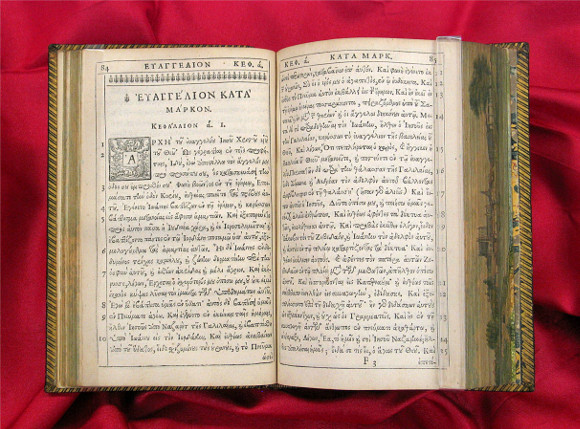The next book in the the Christian Scriptures is the Acts of the Apostles. This book was originally a part of a two-volume set that included the Gospel of Luke. Luke is commonly accepted as the author of both books. Acts is a fast-moving and fascinating look at the first thrity years of the Church. It does this by focusing on the ministries of the two most emminent apostles, Peter and Paul. Acts provide a window into the early church and shows how they worshipped, handled conflict, evangelized, developed leaders, planted churches, and turned the world upside down.
After Acts, the Apostle Paul’s thirteen letters are listed with the longest first to the shortest. Most of his letters were written to churches that he had founded. The exceptions are Romans and Colossians. In each letter, Paul responds to questions from the particular church, addresses problems, and provides both doctrinal and lifestyle teaching. The letter to the Philippian church seems to have been written as a “Thank You” note for a financial gift that they had sent to Paul.
Among Paul’s letters are also four letters that are written to individuals. He wrote two to Timothy and one to Titus. These were co-workers of Paul and he wrote to them to give them guidance in the tasks that he had assigned to them. Paul also wrote a fascinating little letter to a friend of his named Philemon. Paul wrote to Philemon to address a situation involving a runaway slave named Onesimus. Paul was in jail at the time but had somehow encountered Onesimus. He is sending him back to Philemon with the letter in hand. This short note by Paul is a brilliant example of Paul’s leadership style and the way that he viewed slavery.
After Paul’s letters, the group of writings called the General Letters comes next. The authors include James, the brother of Jesus, Peter, John, and Jude, also the brother of Jesus. The letter to the Hebrews is anonymous and scholars have debated for years about who might have written it. Hebrews is actually more of a written sermon or teaching than it is a letter.
The last book in the New Testament is The Revelation. The Revelation is the only example of apocalyptic literature that is in the New Testament. The Apostle John wrote this book while exiled on the island of Patmos. Revelation has been interpreted in many different ways through the centuries and probably will be until Christ returns. In its simplest form, however, Revelation portrays the cosmic battle that is taking place in the heavens and on the earth and shows God’s ultimate victory.
One of the often overlooked aspects of Revelation is the centrality of the Church to God’s plan. Revelation opens with Jesus giving specific messages to seven churches in Asia. These churches could be said to represent the Church universal. Some of them draw Jesus’ praise while others draw his correction. Most of them receive a mixture of praise and correction.
The Christian Bible, like the rest of the Scriptures, has the power to have a lasting impact on those who will spend time reading and meditating in it. Paul said, “All Scripture is God-breathed and is useful for teaching, rebuking, correcting and training in righteousness, so that the man of God may be thoroughly equipped for every good work.” (2 Timothy 3:16-17)
How much time do you spend in the Bible each day?
Please consider joining our support team as we serve in Brazil. Just click here to get involved. Obrigado!

